The Intergovernmental Committee for the Safeguarding of the Intangible Cultural Heritage has met to add new members to the UNESCO Intangible Cultural Heritage List , in a meeting held electronically of the December 13 to 18.
During this meeting, 4 new elements were registered in the List of intangible heritage requiring urgent safeguarding measures and 39 new elements in the L ist representative of the intangible cultural heritage.
The Committee, chaired by Punchi Nilame Meegaswatte (Chairman of the Sri Lankan National Commission for UNESCO) also added four projects to the Registry of Good Practices for the safeguarding of intangible cultural heritage.
Also, within the framework of the international assistance , awarded $172,000 from the Intangible Cultural Heritage Fund in favor of a safeguard project submitted by Mongolia , 116,400 dollars to another project presented by Djibouti and $266,000 to a project submitted by Timor-Leste.
This year the Intergovernmental Committee decided for the first time to inscribe elements of the Congo, Denmark, Democratic Republic of the Congo, Iceland, Haiti, Micronesia, Montenegro, Seychelles, and Timor Leste in the Lists, which now include 630 items out of a total of 140 countries.
Next, the new additions to the List of intangible cultural heritage from UNESCO.
NEW INSCRIPTIONS IN THE LIST OF URGENT SAFEGUARDING OF INTANGIBLE CULTURAL HERITAGE (IN ORDER OF REGISTRATION):
The List of Intangible Cultural Heritage in Need of Urgent Safeguarding Measures brings together living heritage elements whose sustainability is threatened and allows to move international cooperation and assistance necessary to reinforce the transmission of these cultural practices with the community participation. With the four new additions, the number of items on that list now amounts to 71.
Craft construction of canoes and traditional art of navigation in the Caroline Islands (Micronesia)
Faithful to their ancestral legacy, the populations of the Federated States of Micronesia they keep building canoes with sail from native raw materials and using them for the height navigation , guided only by the traditional method of observe the signs of nature and without resorting to any type of nautical instruments.
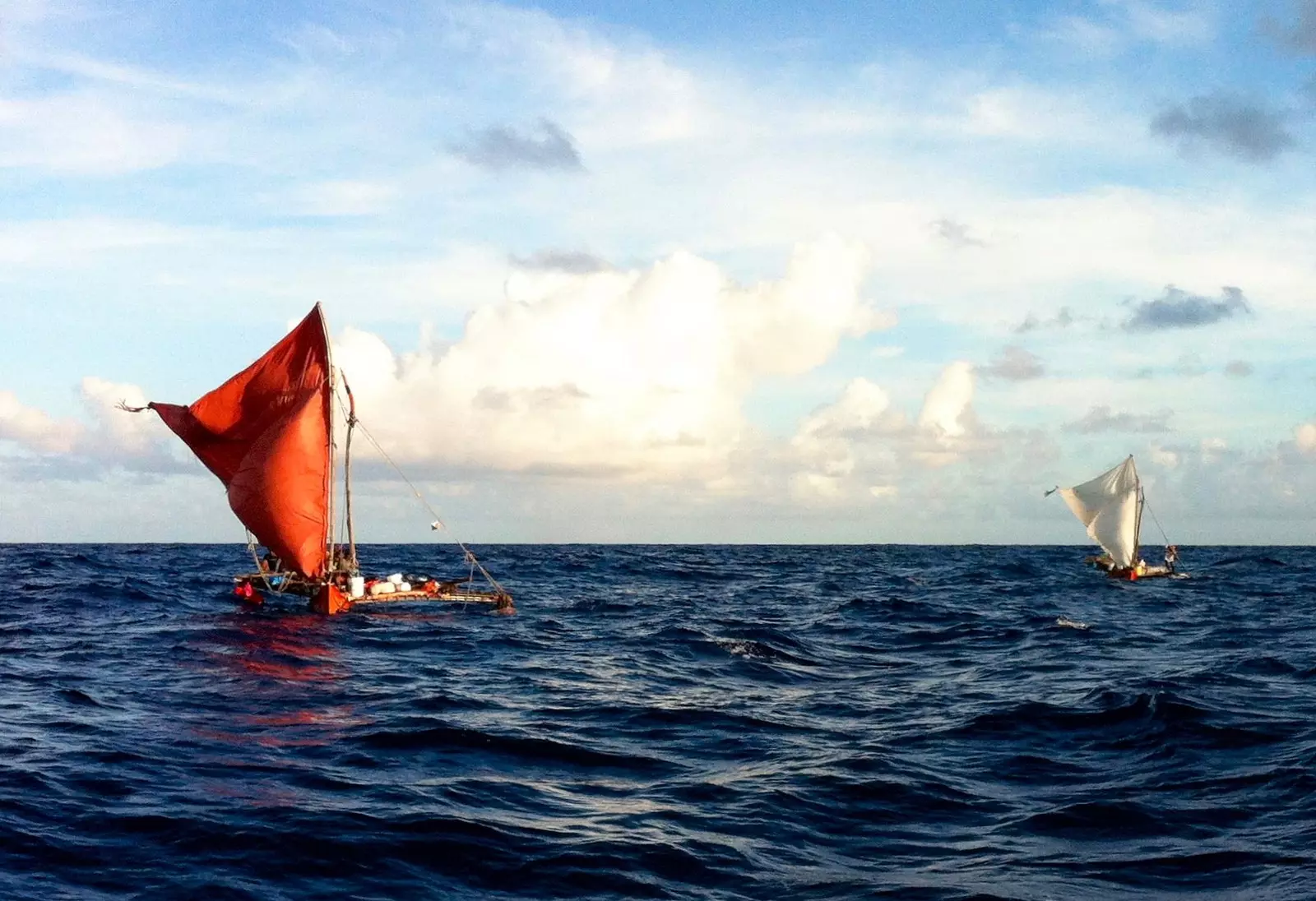
Lamotrek (Micronesia).
The Thai, traditional weaving (Timor-Leste)
The tais is a handmade fabric that serves as decoration element , as well as to make the typical clothing of ceremonies and celebrations. In addition, it is a means of expression of the cultural identity and of the position occupied in society, according to its motives and colors. It is manufactured with dyed cotton yarn plant-based and hand-woven on simple looms.
Construction and use of dugout canoes from a single piece of expanded wood in the Somaa region (Estonia)
The traditional canoe the Estonian region of Somaa is a shallow draft vessel built in two phases: first hollowing out a tree trunk and then expanding its sides. The second stage is the most peculiar: thanks to the combination of the fire of a bonfire with water baths, the sides of the canoe soften and widen, increasing the volume and maneuverability of the boat.
Cultural practices and expressions linked to the use of m'bolon, traditional percussion musical instrument (Mali)
The m'bolon it's a musical instrument typical percussion instrument from the south of Mali, made with a large resonance box formed by a gourd covered in bovid skin and with a curved wooden mast provided with strings.
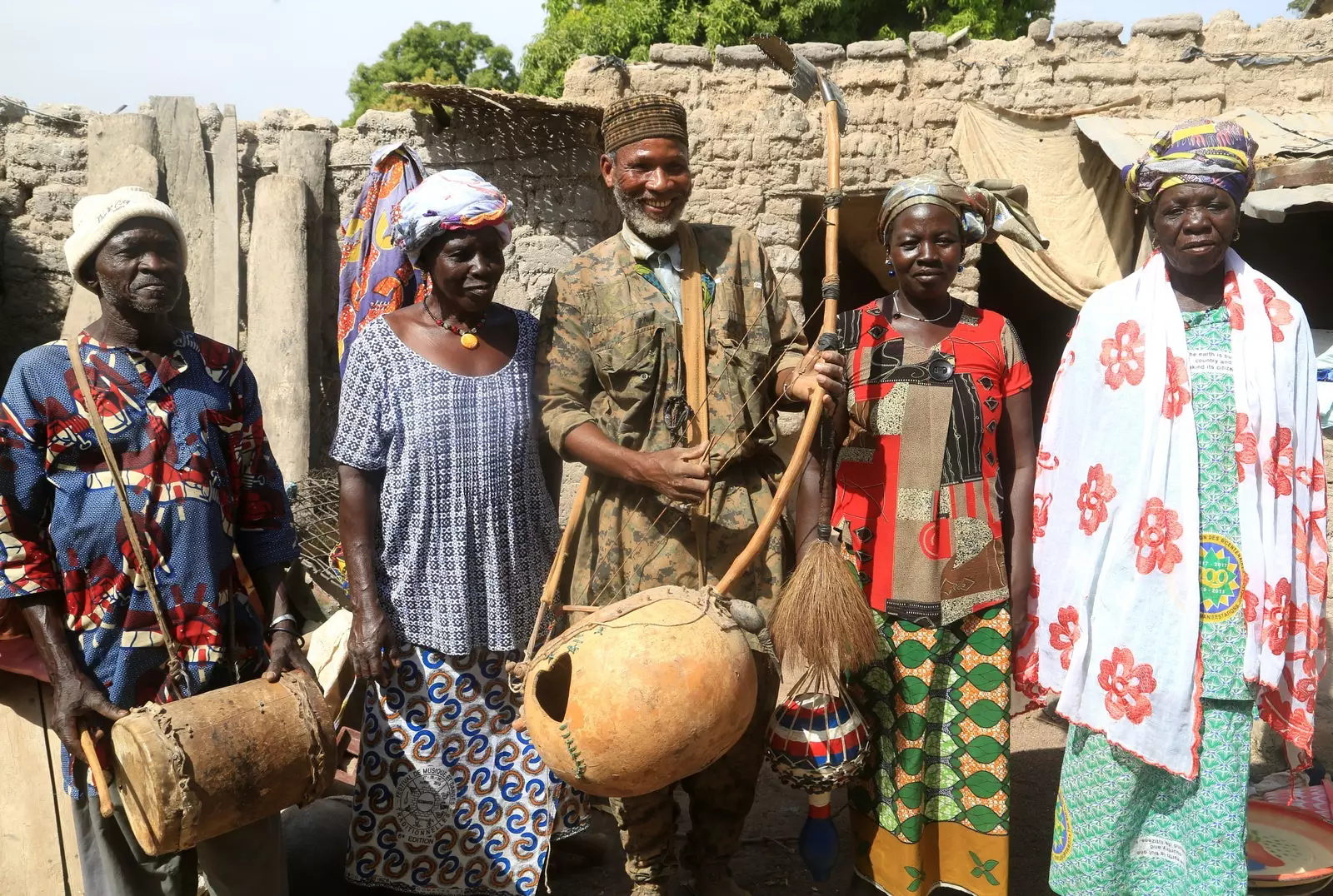
M'bolon group in Tabakoro, Rule de Koumantou commune.
ELEMENTS ADDED TO THE REPRESENTATIVE LIST OF THE INTANGIBLE CULTURAL HERITAGE OF HUMANITY (IN ORDER OF REGISTRATION):
The Representative List of the Intangible Cultural Heritage of Humanity is intended to give visibility to the traditions and knowledge of communities. With the 39 new additions, the list already has 530 items.
Falconry, a living human heritage (United Arab Emirates, Austria, Belgium, Qatar, Croatia, Czech Republic, France, Germany, Hungary, Ireland, Italy, Kazakhstan, Republic of Korea, Kyrgyzstan, Mongolia, Morocco, Netherlands, Pakistan, Poland, Portugal, Saudi Arabia, Slovakia, Spain and Syria)
The traditional art of falconry consists of training falcons and other birds of prey to hunt. In the origin, the human being used this art to obtain food, but later it evolved, acquiring other values and becoming a recreational activity. Modern falconry is practiced today in more than 80 countries, and, in addition to tradition, it also focuses on the preservation of falcons and their habitats.
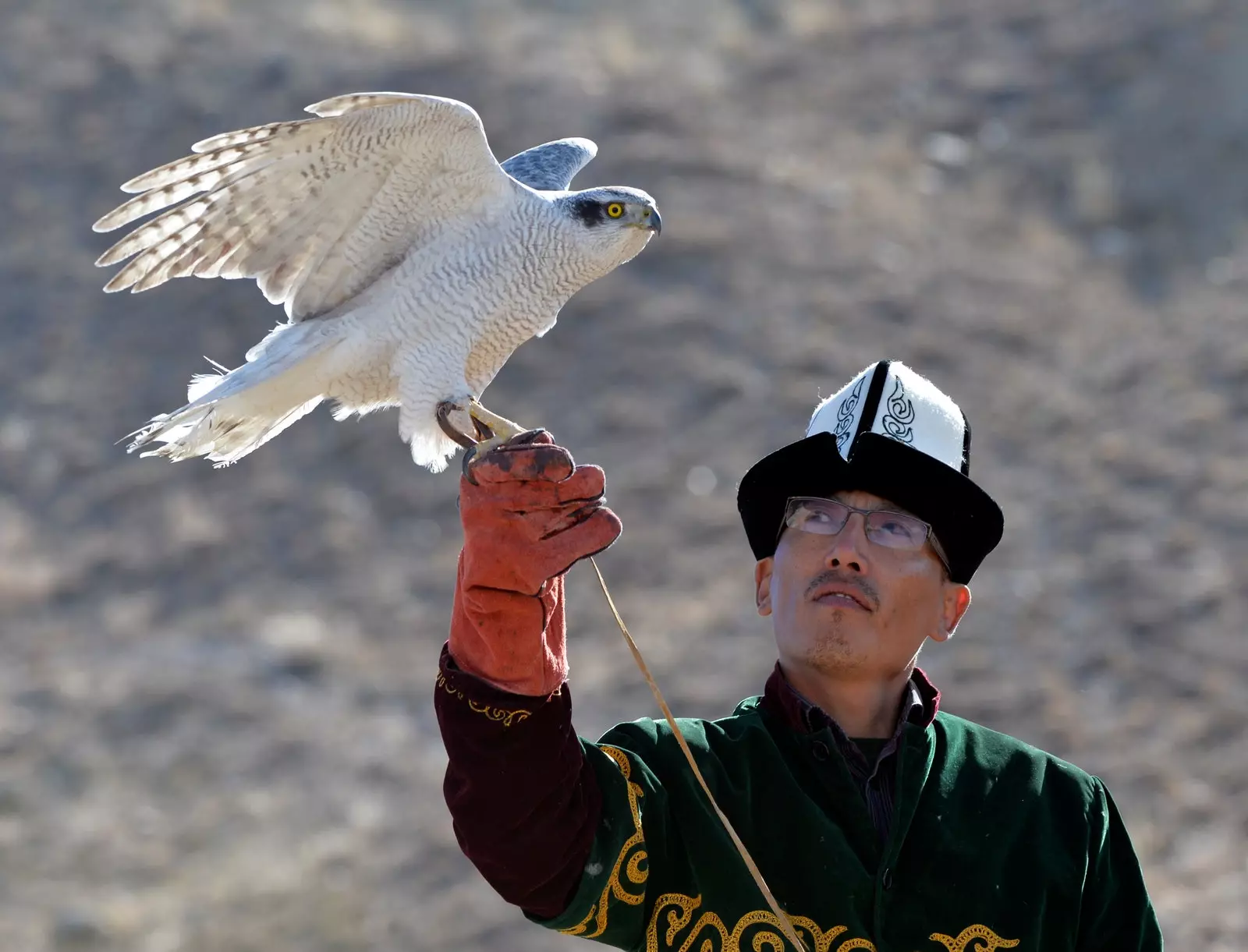
Falconry festivals in Kyrgyzstan.
Arabic calligraphy: knowledge, skills and practices (Saudi Arabia, Algeria, Bahrain, Egypt, Iraq, Jordan, Kuwait, Lebanon, Mauritania, Morocco, Oman, Palestine, Sudan, Tunisia, United Arab Emirates and Yemen)
"The arabic calligraphy is he art of fluently transcribing the alphabet of the Arabic language to print harmony, elegance and beauty to writing”. At first, it was conceived to make the writing clearer and more legible, but later it became a real islamic arabic art to write classic and modern works. In traditional calligraphy, natural materials are used, while in modern calligraphy natural materials are used. markers, synthetic paints and sprays.
Traditional Nordic lashed hull boats (Denmark, Finland, Iceland, Norway and Sweden)
The traditional nordic lashed hull boats –or a tingladillo– are small and open, they are built with wood and are between five and ten meters long. The nordic peoples have built these boats for two millennia following a series of basic techniques: fastening of thin boards to the frame of the keel and stem; subsequent fastening of the overlapping boards to each other with metal rivets, wooden dowels or ropes; Y reinforcement of the interior of the hull with frames.
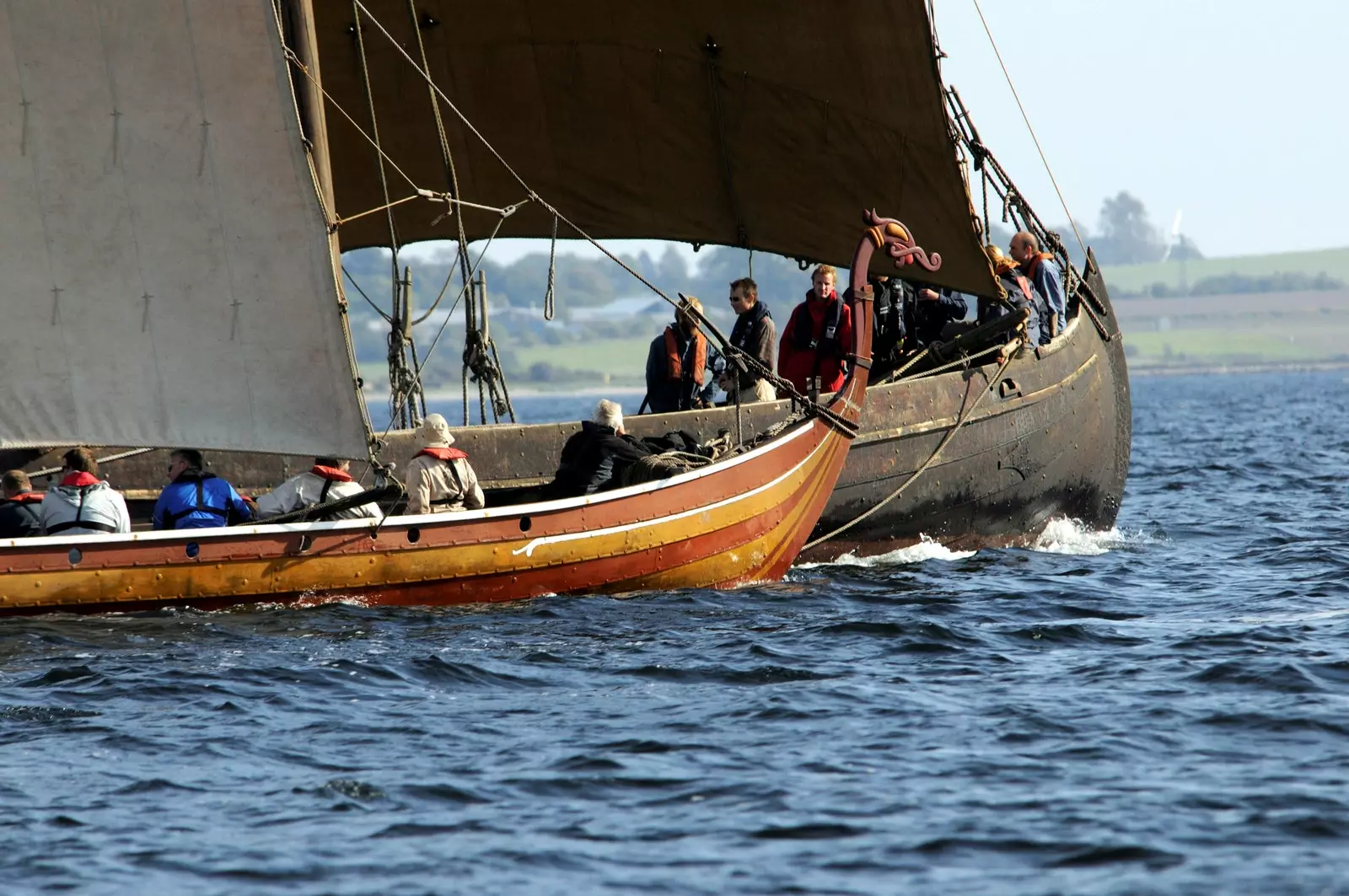
Two replicas of Viking ships sailing through the Roskilde Fjord (Denmark).
The Congolese rumba (Congo and Democratic Republic of the Congo)
The congolese rumba it's a musical genre and popular dance from urban areas of the Democratic Republic of the Congo and the Congo, which are usually carried out by a woman and a man. It is interpreted in public, private and religious places of worship to celebrate mourning parties or ceremonies , Accompanied by orchestras or soloists, choirs and dancers.
The Great Festival of Tarija (Bolivia)
The Big Party of Tarija , typical of the Bolivian city of the same name, is celebrated every year in August and September with religious processions, festivities, music, dances, competitions and fireworks in honor of San Roque. Its origin dates back to the times of the Spanish colonization, when the inhabitants of the city prayed to this saint. During the party, performances of music and dance with colorful masks and costumes, There are exhibitions of regional crafts and are also made traditional dishes.
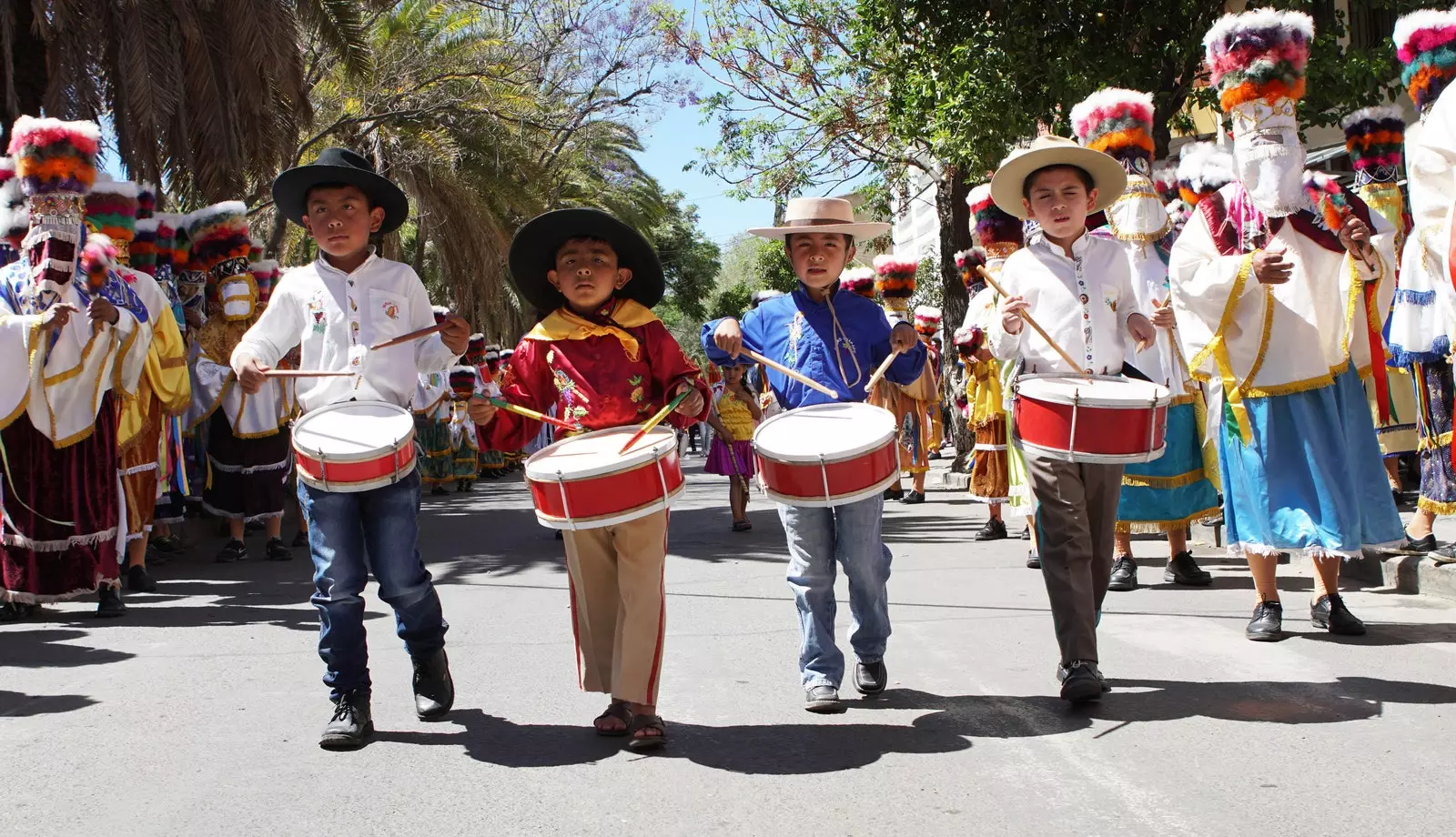
Children drummers during the procession of San Roque.
Festive cycle around the veneration and worship of San Juan Bautista (Venezuela)
The cultural practices and knowledge linked to celebrations in honor of Saint John the Baptist in Venezuela date from late 18th century and they originated in Afro-Venezuelan communities enslaved in the Spanish colonial domains. The followers of this festive cycle, called sanjuaneros , consider this cycle as a symbol of cultural resistance , freedom and evocation of the memory of their slave ancestors. During the festivities, there drumbeats, dances, storytelling, and religious processions with the statue of Saint John the Baptist. The most important days are June 23 and 24.
'El Pasillo', song and poetry (Ecuador)
'The hall" it's a musical and dance genre which made its appearance in Ecuador in the XIX century as a result of a merger between various indigenous and European music. The dance is done in couple, taking short steps and the music is played by soloists, duets, trios and orchestras.
Dances and expressions associated with the Corpus Christi festivity (Panama)
The Corpus Christi Festival is the celebration of the body and blood of the crucified Christ and in Panama merges the catholic celebrations with a series of popular celebrations , What theatrical performances, music, popular dances and comparsas of people disguised with masks and colorful dresses.
Values, knowledge, knowledge and practices of the Awajún people associated with the production of ceramics (Peru)
The Awajún people considers that the pottery art it is a paradigm of its harmonious relationship with nature. The process of pottery making It comprises five phases: the collection of the raw material, the modeling, the firing, the ornamentation and the finishing. Each of these phases has a special meaning and is associated with a series of values transmitted by oral tradition.
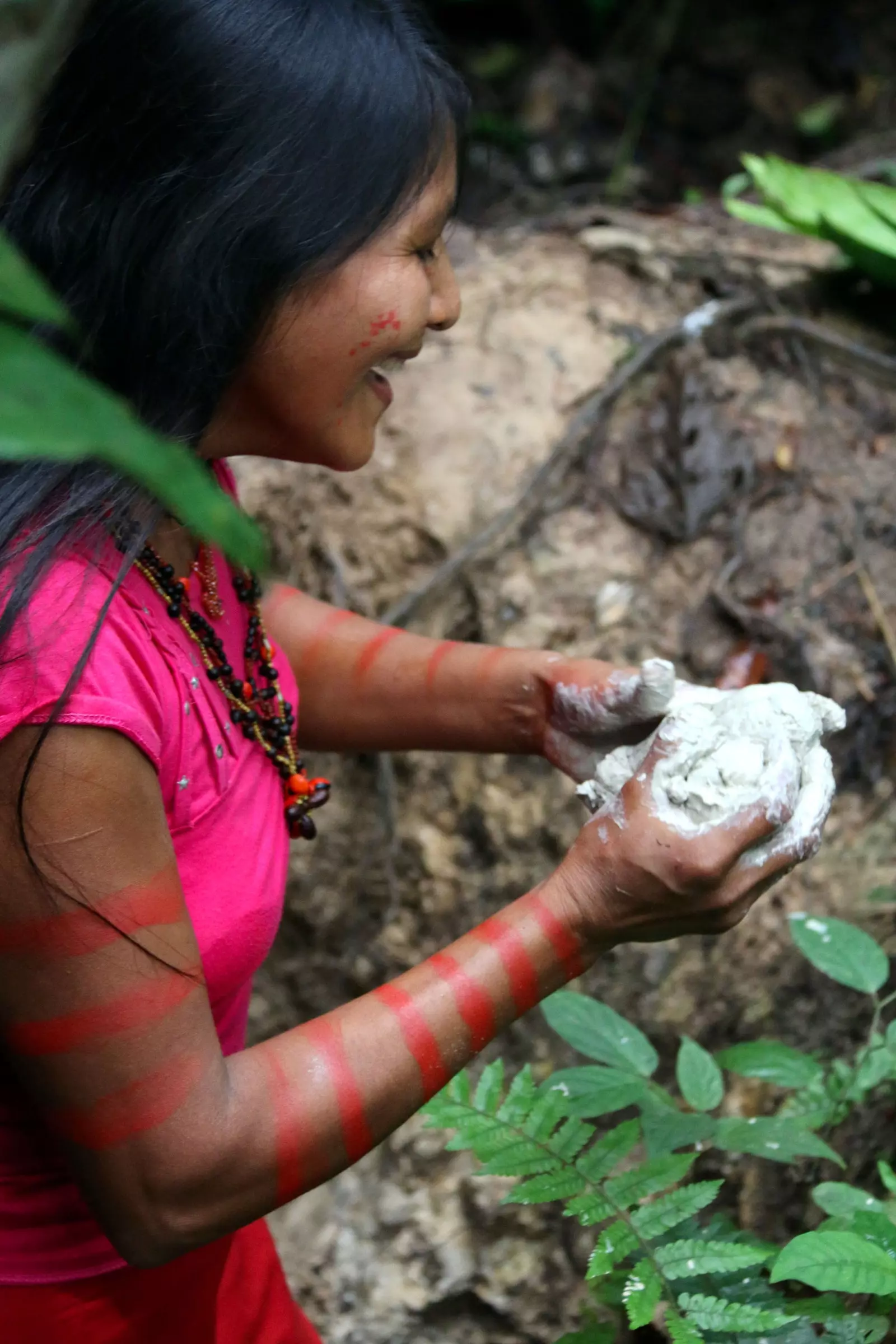
Clay collecting in the Amazon jungle.
Songket (Malaysia)
The fabric called songket It is made by hand by the women of the Malaysian peninsula of Sarawak. The technique consists of inserting, between the threads of the weft and those of the loom's warp, gold or silver threads so that they produce a characteristic ornamental effect giving the impression of floating on the colorful background of the fabric. This fabric is made with a traditional Malay two-pedal loom called kek.
Gamelan (Indonesia)
gamelan is the name given to the indonesian traditional music orchestra and its instrumental, consisting primarily of metallophones (called gangsas) made by hand and ornate, as well as by gongs, gong chimes, xylophones, cymbals and drums. All these percussions are accompanied by string instruments and bamboo flutes.
Nora, dance theater (Thailand)
Nora is a drama genre from southern Thailand five centuries old that consists of a show of lively and acrobatic dances Accompanied by improvised songs. Its theme is usually based on stories about Buddha or deeds of legendary heroes.
Xòe dance art of the Tai people (Vietnam)
The movements of the xòe dance symbolize human activities in areas such as the celebration of rites, culture, daily life and work. There are three kinds of dance xòe –the ritual, the presentation and the circle dance– and is often practiced at ceremonies, weddings, and community events.
Durga Puja celebration in Calcutta (India)
The celebration of durga puja takes place in autumn and lasts ten days. It is dedicated to the veneration of Durga, mother goddess of the Hindu religion , whose images –previously sculpted in craft workshops– with clay extracted from the Ganges , they submerge in this same river on the tenth and last day of the festivities.
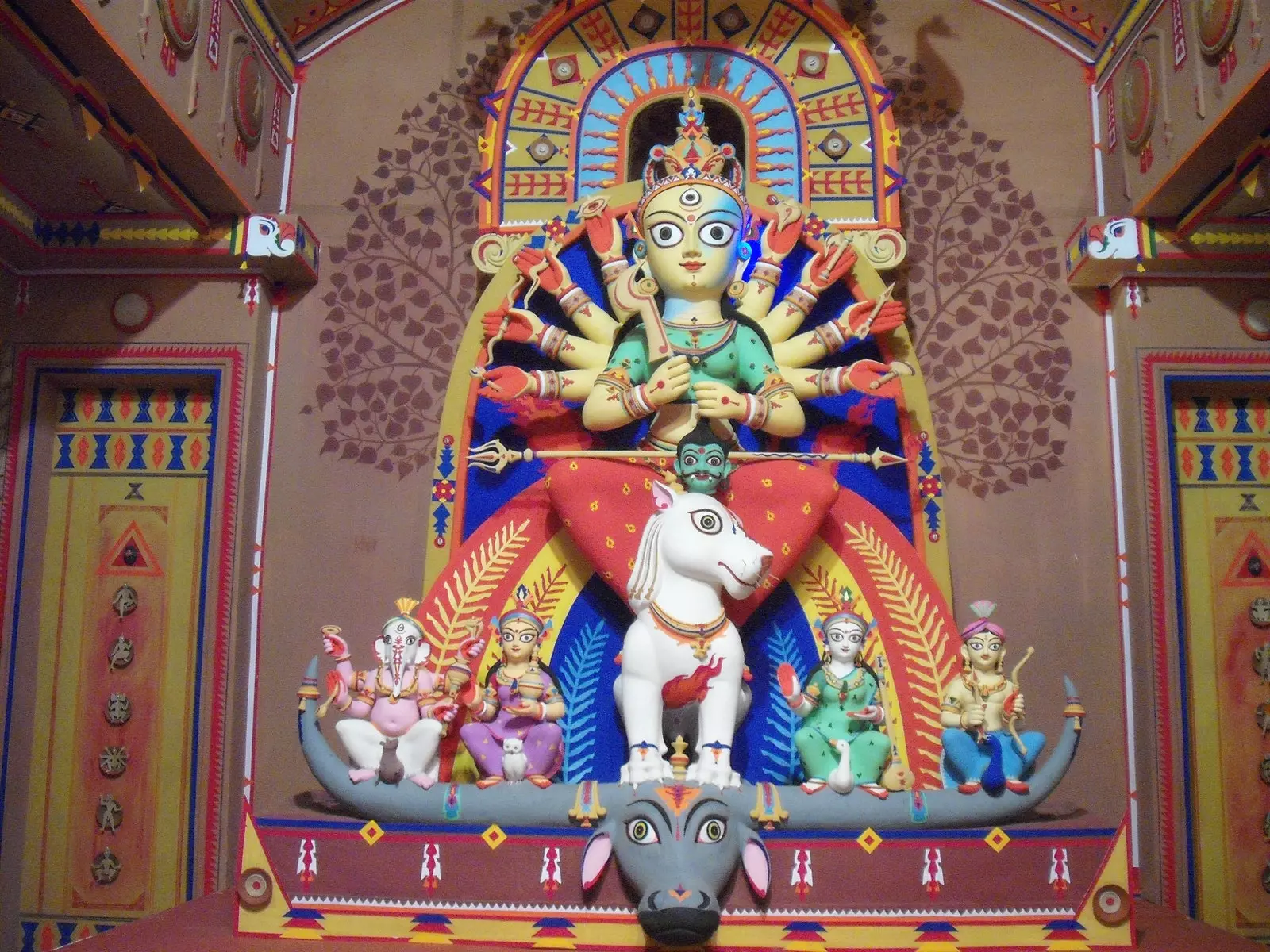
Durga at 41 Pally, a popular community in Haridebpur.
Traditional handicraft manufacturing of Dumbara Ratā Kalāla (Sri Lanka)
The Dumbara-ratā kalāla (Dumbara Valley tapestries) are works of textile crafts that are used as hangings, upholstery or cushion covers. They are made by hand by a community called Kinara located in the villages of Kalasirigama and Alokagama.
Artisanal production of the dutar and the art of performing traditional music with songs (Turkmenistan)
The dutar is a traditional musical genre performed with the instrument of the same name, consisting of a two-stringed lute, with a long neck and a wooden soundboard covered by a fine harmony table of the same material. The instrument is used to interpret the main genres of music and singing of Turkmenistan. There are two types of dutar music proper: the instrumental solo (dutarchy) and the one accompanied by songs, poems or prose narratives (bagshy).
The moutya dance (Seychelles)
The moutya dance was introduced by the african slaves brought by French settlers to the seychelles at the beginning of the 18th century. The slaves they danced it at night in the woods, far from the plantations where their masters lived. It is usually executed to the sound of drums around a campfire and is currently still a expression of cultural identity that continues to be practiced spontaneously or on the occasion of cultural events.
Malagasy Kabary, Malagasy oratory art (Madagascar)
The kabary malagasy it's a poetized speech speaking before a large audience. This oratorical art, originally used by leaders to address communities, resorts to the use of proverbs, maxims, rhetorical figures and puns. Over time, it has become a very important element of festivities, funerals, official ceremonies and public events in Madagascar.
Ceebu Jën, culinary art (Senegal)
The Ceebu Jen it's a typical Senegalese dish , whose origin is found in a traditional stew consumed by the fishermen from the island of San Luis. Although the recipes differ somewhat by region, the basic ingredients They are: broken rice, slices of fresh fish, dried fish, molluscs and seasonal vegetables or other vegetables, such as tomatoes, carrots, aubergines, cabbage, sweet potatoes, yuca, okra, onions, garlic, chili peppers and parsley and bay leaves.
Fjiri (Bahrain)
The Fjiri is a scenic art that evokes the history of pearl oyster fishing in Bahrain and dates from the end of the 19th century. It was traditionally performed by the divers and boat crews dedicated to this type of fishing and is considered an expression of the hard work of the Bahraini people at sea.
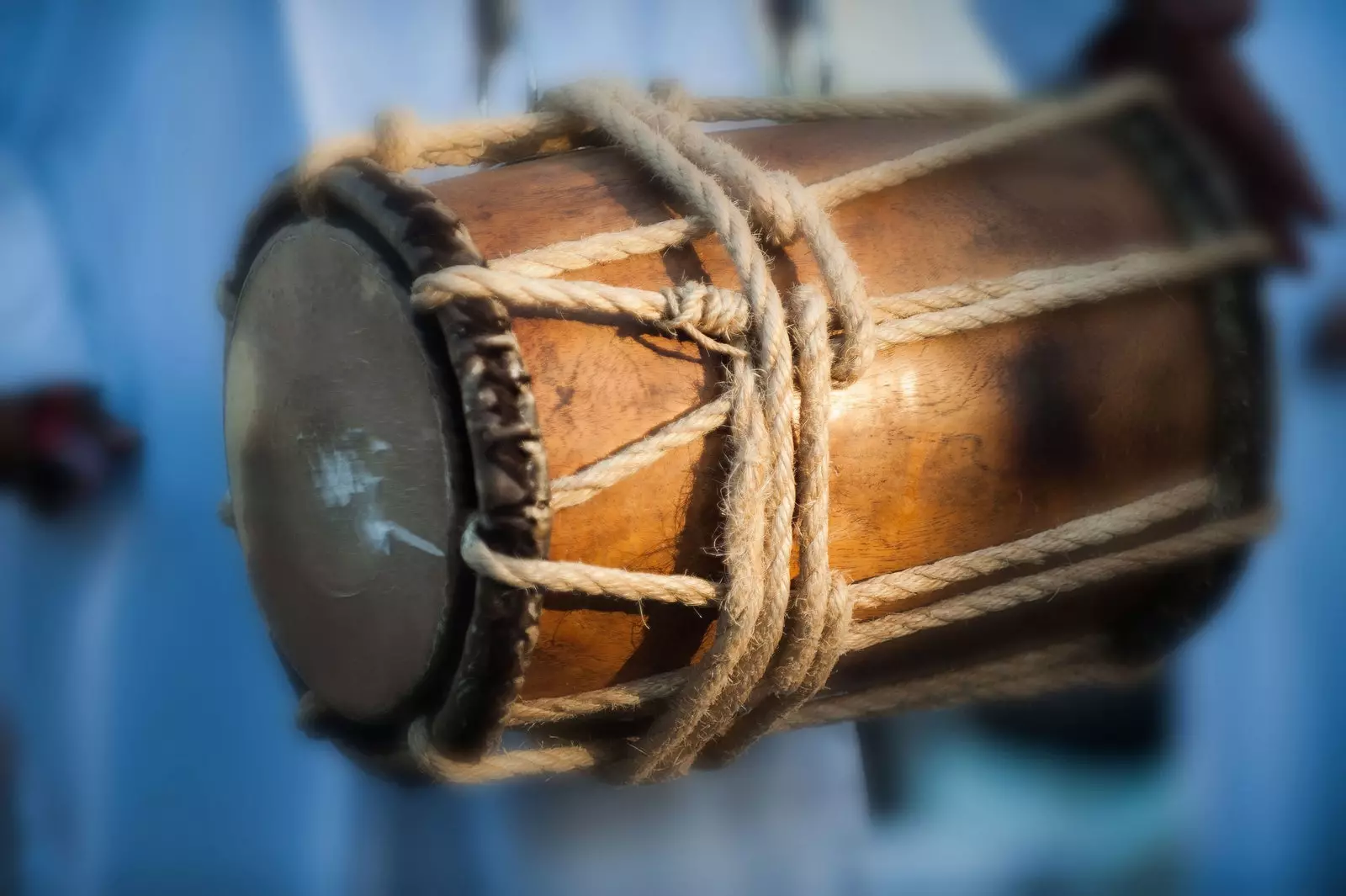
Instrument used in the Fjiri.
Al-Naoor, the art and traditional techniques of making waterwheels (Iraq)
The Al Naoor (ferris wheel) is a traditional hydraulic device consisting of a wooden wheel that rotates around its axis, with 24 columns formed by wooden bars and as many clay pots tied by ropes braided with palm leaves. In Iraq, waterwheels are used in the bed of the Euphrates river, in areas where its level is lower than that of the adjacent fields, in order to raise water and irrigate crops located higher up.
The art of embroidery in Palestine: knowledge, techniques, practices and rituals (Palestine)
Before the embroidery art It was practiced almost exclusively in the palestinian rural areas , but today it is widespread throughout the country and among members of the diaspora. Villagers' attire is usually a long dress, trousers, a jacket, a headscarf, and a veil; all of them with embroidery of various motifs made with silk thread in wool, linen or cotton fabrics. The ornamental motifs and colors indicate region of origin, marital status, and socioeconomic status.
Al-Qudoud al-Halabiya (Syria)
The traditional musical genre of Aleppo is called Al-Qudoud al-Halabiya and it is a uniform melody that is sung accompanied by a musical ensemble in a religious or secular context.
Tbourida (Morocco)
The Tbourida it's a 16th century Moroccan horse show which consists of a staging of military cavalcades reconstituted according to ancestral Arab-Amazigh conventions and rituals. The riders first perform a display of acrobatic handling of their weapons, and then they pretend to gallop off to war firing their rifles loaded with blank cartridges.
Hüsn-i Hat, traditional calligraphy in Islamic art (Turkey)
In Turkey, the Hüsn-i Hat it's a age-old calligraphy art performed with the following instruments: a special glossy paper , a pen with blades and ink made from soot. Most of the calligraphers (hattats) They make their own instruments.
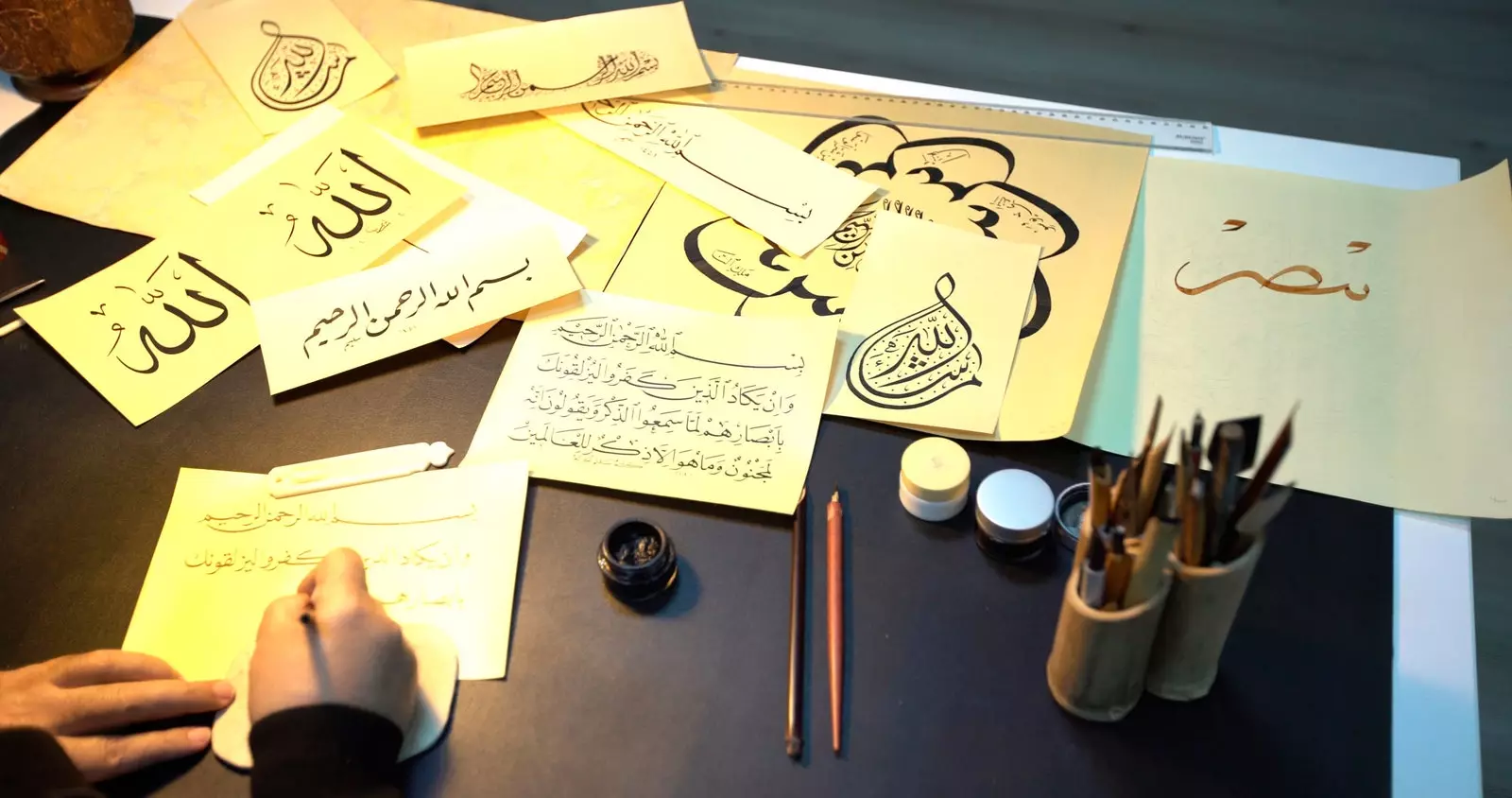
Hüsn-i Ha.
Kaustinen violin music and related cultural practices and expressions (Finland)
The violin is the most important instrument of Kaustinen's music culture and marks the rhythm of the songs and dances performed (alone or with other instruments). The peculiar modalities and techniques of this folk music date back to some 250 years ago and his repertoire consists of hundreds of melodies.
Songs and dances with drums of the Inuits (Denmark)
The songs and dances to the beat of the drum (called qilaat) are traditional indigenous modalities of musical and artistic expression of the Inuit people of Greenland. They are usually performed on the occasion of various celebrations and social events, in a group or alone. The drum is played by moving it up and down in different directions and hitting its snare with a bone or wooden drumstick to produce a loud resonant sound.
L-Għana, traditional Maltese folk song (Malta)
L-Għana is a song that brings together three related modalities of maltese folk songs in rhyme The most widespread today is the "Living ingenuity" , an improvised duel between one or two pairs of singers, whose merits are appreciated based on rhymes, convincing theses and funny retorts.
Festivities of the Village of Campo Maior (Portugal)
During the Festivities of the Town of Campo Maior , the streets are decorated with millions of colored paper flowers and various motifs. The neighbors set the date of the festivities and decide what the design and color theme of the ornamentation should be.
Falak (Tajikistan)
Falak means "universe", "paradise" and "ventura" and is the folk music of the highlanders of Tajikistan. This musical genre is interpreted a cappella by a soloist or accompanied by a musical instrument or an orchestra, or even a group of dancers. Regarding the theme, elements such as homeland, love, pain, grief or separation and reunion between lovers or between parents and children.
Visoko, traditional polyphonic singing of Dolen and Satovcha (peoples of southwestern Bulgaria)
The Visoko is a specific vocal art of the Bulgarian villages of Dolen and Satovcha , located in the Blagoevgrad region. There are three types of chant: the serious, the acute and the mixed.
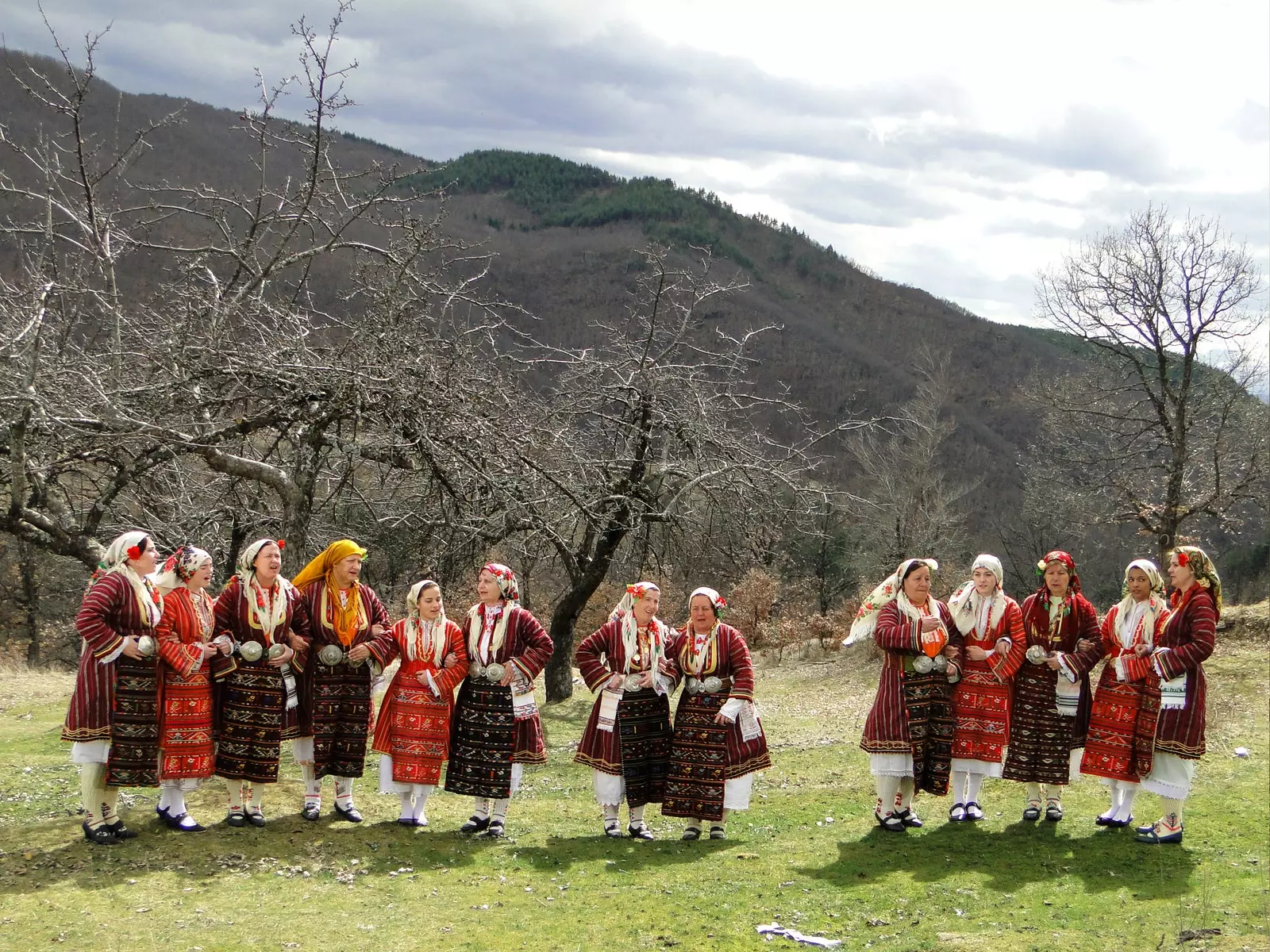
Female singing group in traditional costumes at Satovcha.
Örnek, Crimean Tatar ornamental symbolism and related knowledge (Ukraine)
The Ornek It is still used today for carrying out embroidery, weaving, ceramics, engravings, jewelry, wood sculptures and mural and glass paintings. Geometric symbols are mainly used as motifs in textiles, while floral symbols are used as ornaments in other traditional crafts.
Namur stilt tournaments (Belgium)
The stilt tournaments are an ancient practice of the Belgian city of Namur dating back to the early XV century in which two groups of neighbors mounted on stilts face each other with the aim of throw the opponent off balance. In order not to lose the tradition, there are training courses organized by the local association The 'Striders' of Namur.
Traditional knowledge and practices of the search and extraction of the truffle (Italy)
In peninsular Italy, the culture of the truffle and its traditions They have been passed down orally for centuries. The truffle hunters (tartufai) , with the help of a trained dog, locate the places where types of trees grow whose roots favor the growth of this underground fungus. Once the site is found, the seeker digs carefully to extract it with a special hoe.
The culture of Corsican, flower and fruit courtship (Netherlands)
The Corsican It is a celebration with origin in Italy and the south of France, extended by the Netherlands since the end of the 19th century. This annual celebration consists of a parade of floats or boats decorated with flowers, fruit and vegetables which sometimes carry people in disguise.
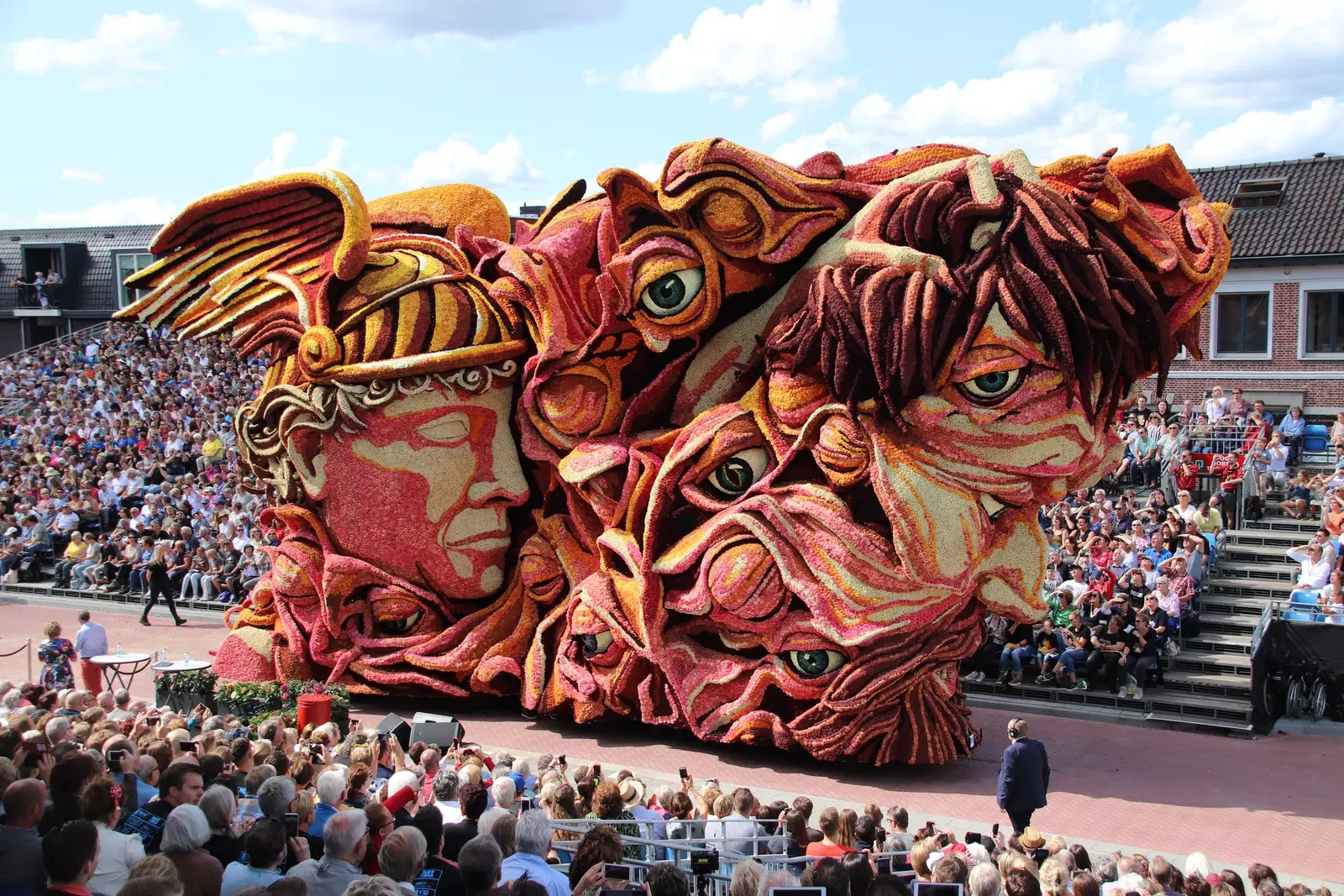
One of Corsican's massive floral works of art.
Bakhshi art (Uzbekistan)
The bakhshi is he art of reciting and staging ancient epic poems of the towns Uzbek and Karakalpak to the accompaniment of traditional musical instruments, as The narrator (bakhshi) performs from memory the poems (dostons) , which are based on myths, legends, folk tales and traditional songs.
Cultural heritage of the Seafaring Brotherhood of the Bay of Kotor: commemorative and representative festival of a cultural identity (Montenegro)
The Seafaring Brotherhood of the Bay of Kotor is a traditional maritime organization , nongovernmental, founded in 809 which has played an essential role in defending naval history and seafaring traditions. In official ceremonies, the brothers wear colorful traditional uniforms, carry ancient weapons and perform a medieval circle dance called kolo.
The tradition of floral tapestries for the Corpus Christi processions (Poland)
In Poland, during the Corpus Christi Festival , They installed flower rugs in the streets, covering the entire route of the religious procession and reaching two kilometers in length.
Joumou soup (Haiti)
The Intergovernmental Committee decided on this inscription on the basis of “the recommendation of the evaluation body and following a fast-track procedure, given the exceptional circumstances and the difficulties that the country has recently gone through.”
The Joumou soup is a traditional Haitian pumpkin soup made with vegetables, bananas, meat, pasta and spices. It was originally reserved for slave owners, but the Haitians appropriated the soup upon gaining independence from France, turning it into symbol of his newfound freedom.
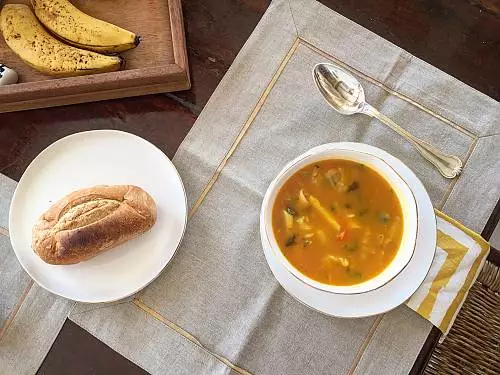
Joumou soup.
INSCRIPTIONS IN THE REGISTRY OF GOOD SAFEGUARDING PRACTICES
Four are the projects selected to integrate the Registry of Good Practices for the safeguarding of intangible cultural heritage.
This record favors exchange of successful safeguarding experiences and promotes examples of living heritage and its practice and transmission to future generations. The Registry now has 29 good practices.
The Schools of Living Traditions (SLT) (Philippines)
In 1995, the Subcommission on Cultural Communities and Traditional Arts of the National Commission for Culture and the Arts (NCCA ) – the body in charge of preserving culture and the arts in the Philippines – stated that “safeguarding traditional practices and knowledge from rapid cultural devaluation is an essential task”.
This paved the way for adopting the program Living Traditions Schools , consisting of creating non-formal learning centers run by local communities in which knowledge, skills and values related to cultural heritage are transmitted to younger generations.
Nomadic Games - Rediscovering Heritage and Celebrating Diversity (Kyrgyzstan)
The intangible cultural heritage of Kyrgyz people was always closely linked in the past to his way of nomadic life , but the forced sedentarization imposed in the Soviet era meant the decline of the practice of a series of elements whose viability is now in danger. For example, traditional nomadic games. The program Nomadic Games - Rediscovery of Heritage and Celebration of Diversity it focuses mainly on the identification and documentation of the games played in the different regions of the country.
National Program for the Safeguarding of the Traditional Art of Calligraphy (Iran)
With the advent of printing and computer software in Iran, the art of calligraphy gradually went into decline. In the 1980s, the government, together with some non-governmental organizations, developed a national program to safeguard it , setting the following tasks: organize public courses for formal and informal learning of calligraphy, publish books and brochures about this traditional cultural practice, organize calligraphic artwork exhibitions , elaborate college curricula of this discipline and promote an adequate use of traditional calligraphic art, adapting it to the conditions of modern life.
Success in promoting traditional foods and safeguarding traditional ways of eating (Kenya)
In Kenya , traditional ways of eating were being lost and in danger of disappearing, so in 2007, the country committed to safeguard such food practices and the cultural expressions related to them. Two major initiatives were taken in collaboration with scientists and community groups: make an inventory of traditional foods and their uses, and carry out a pilot project in primary schools to sensitize children to the negative consequences of the disappearance of culinary tradition.
